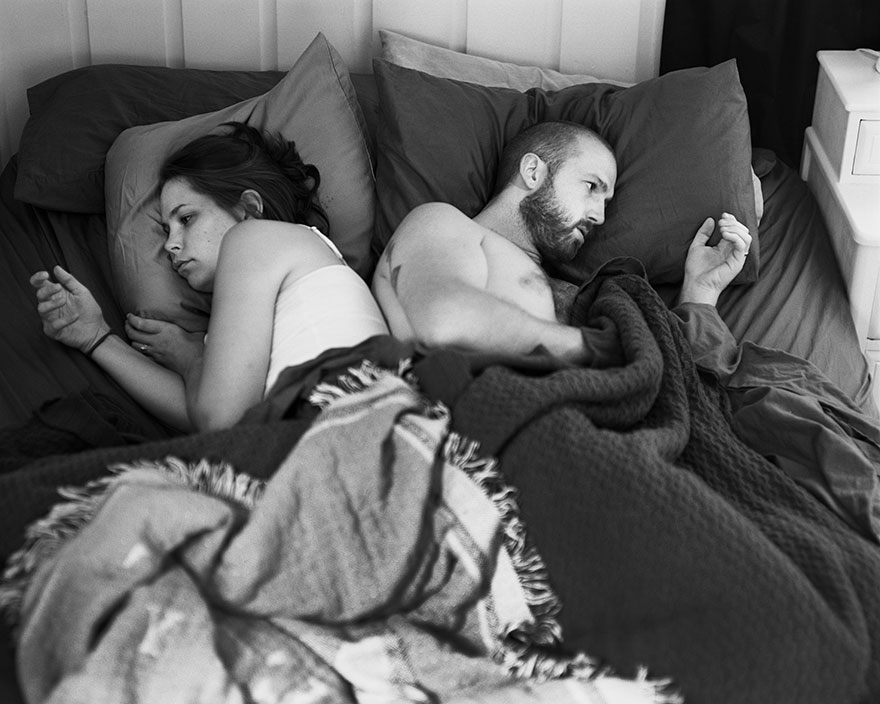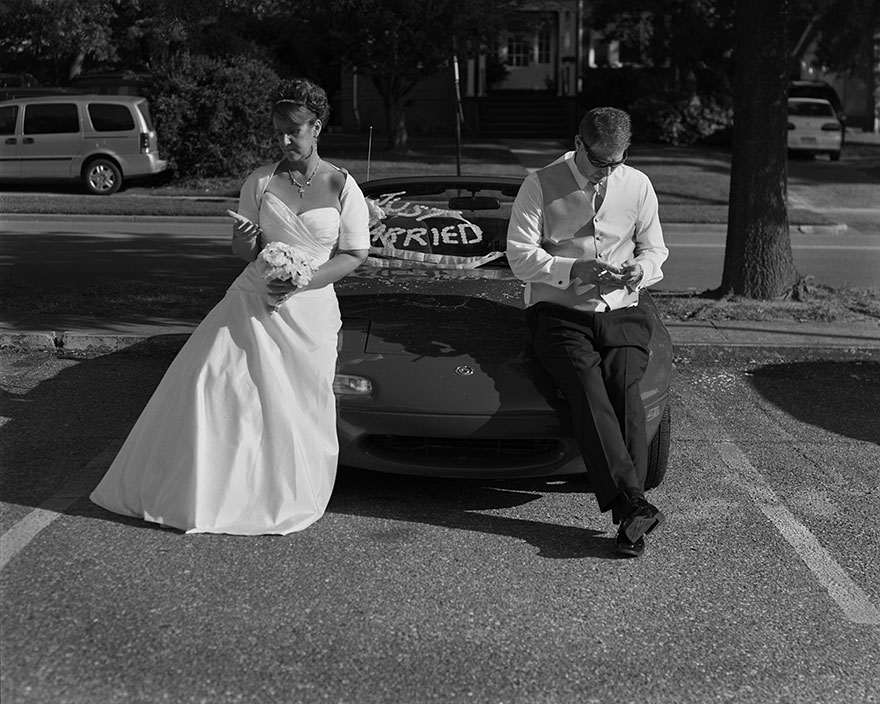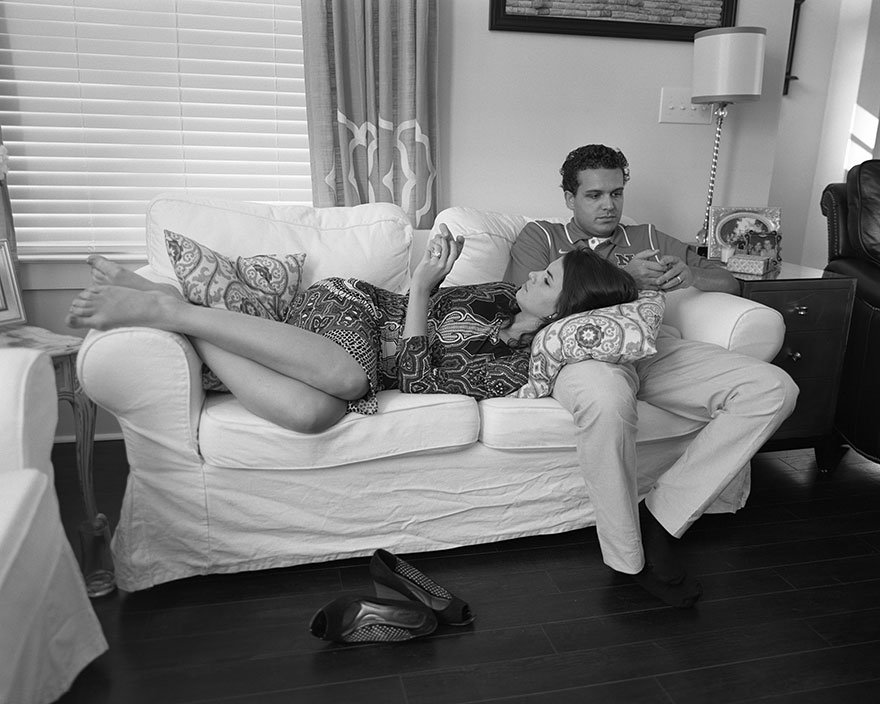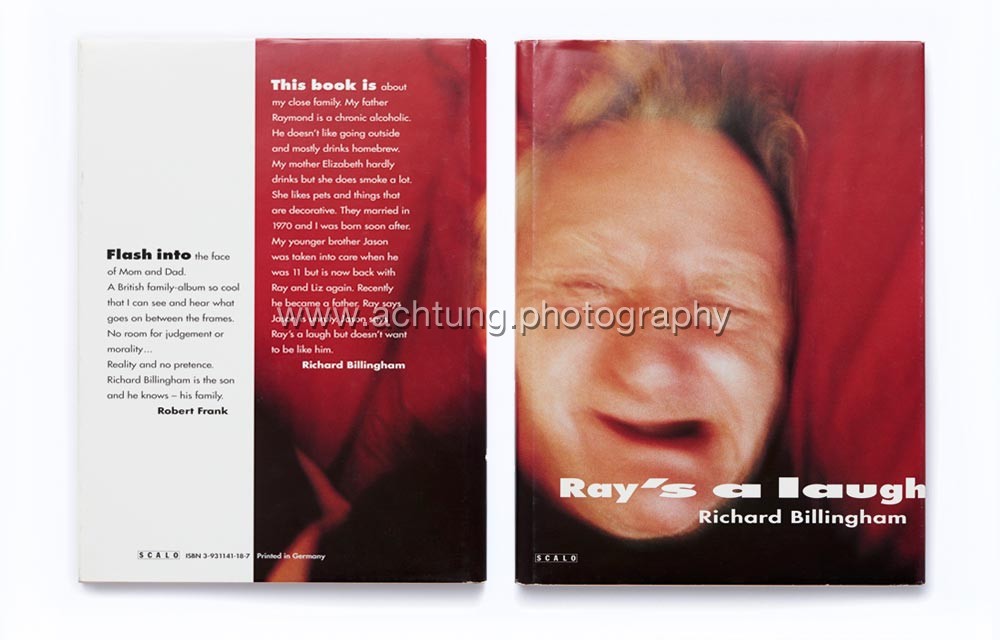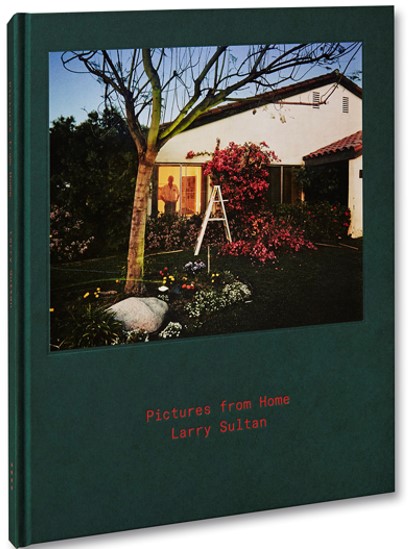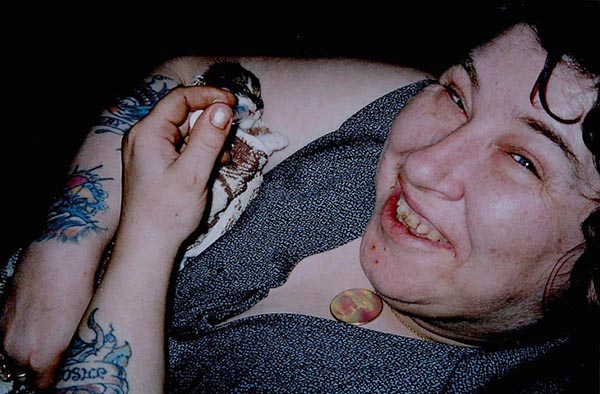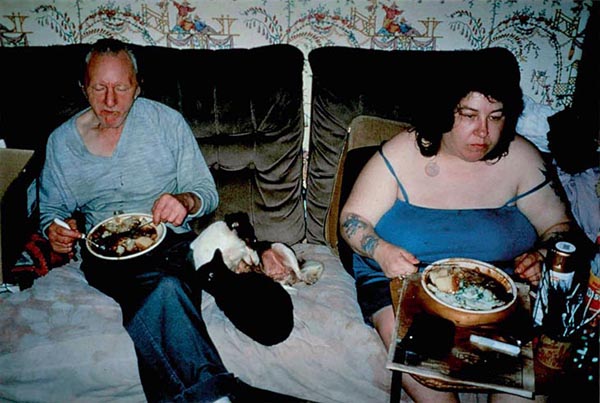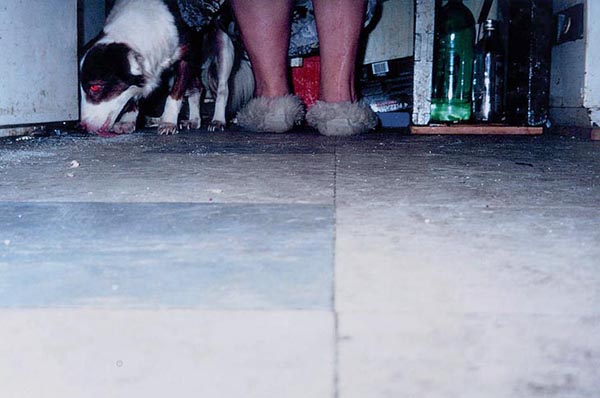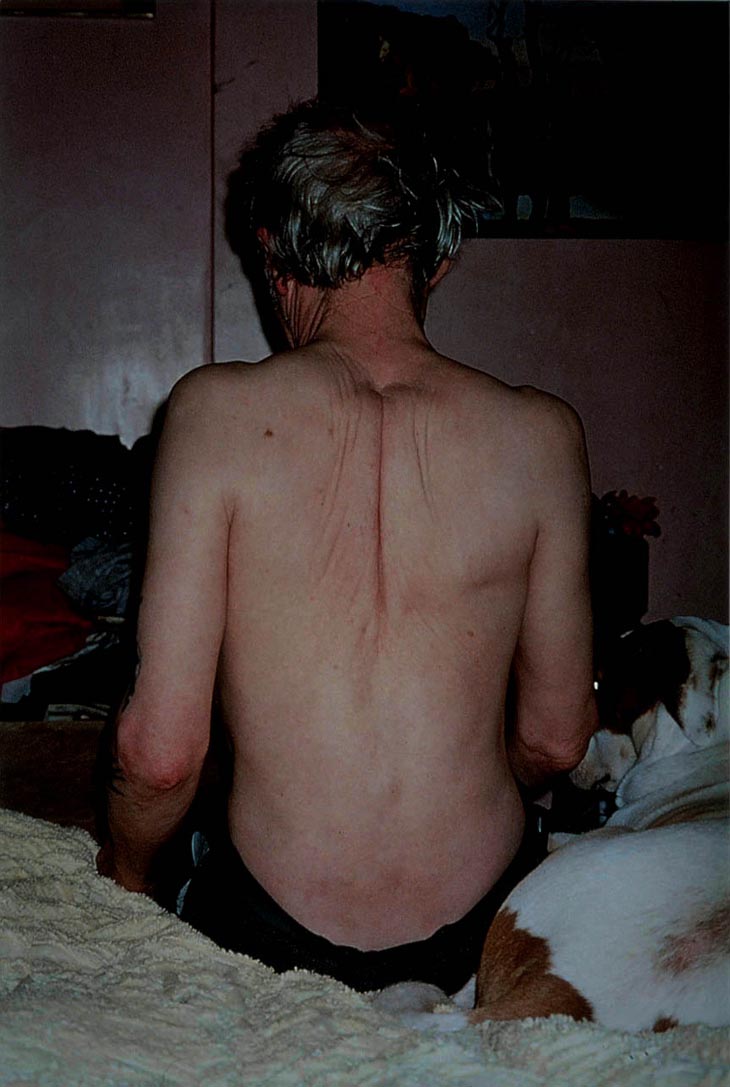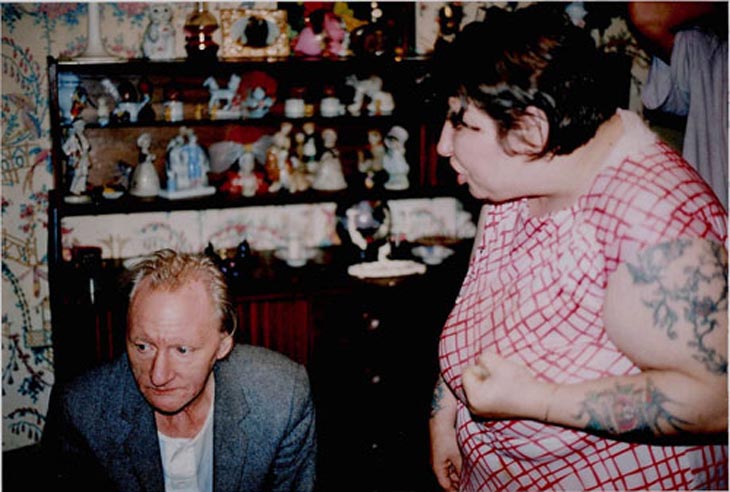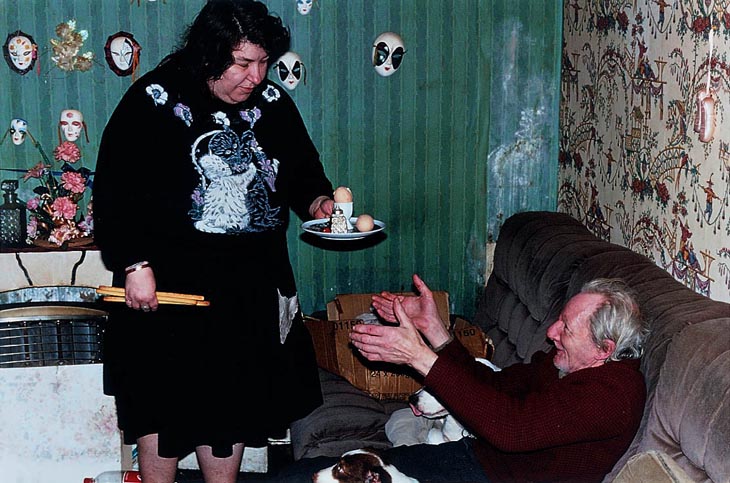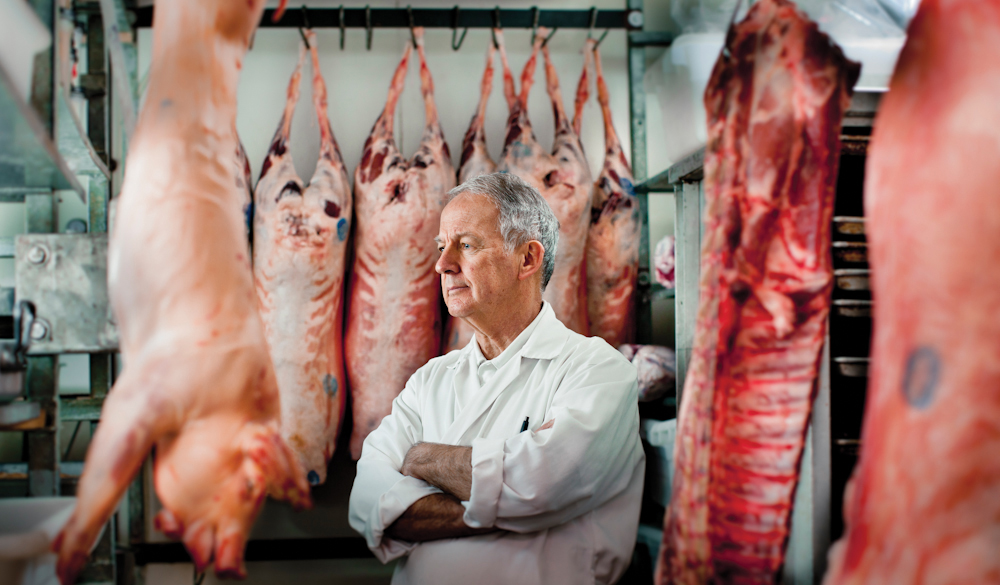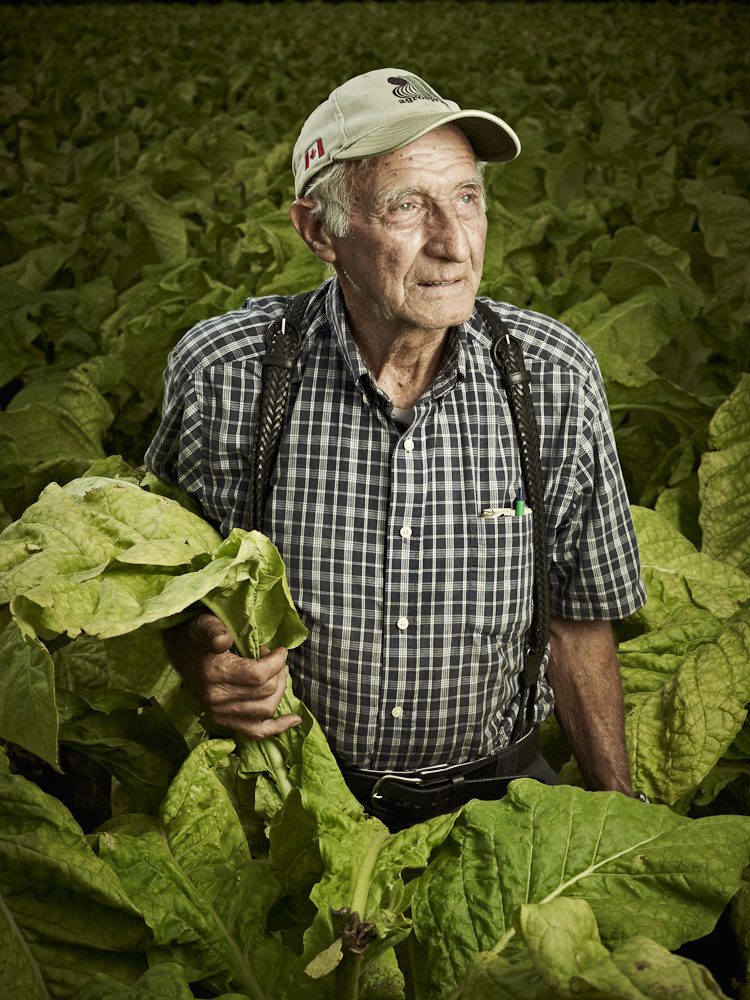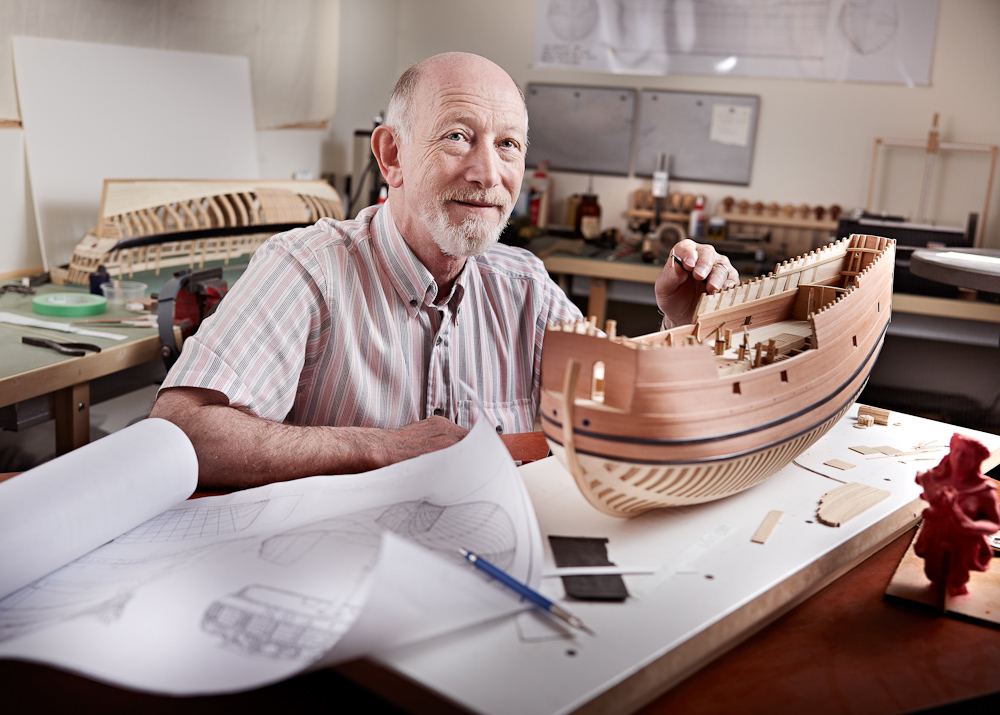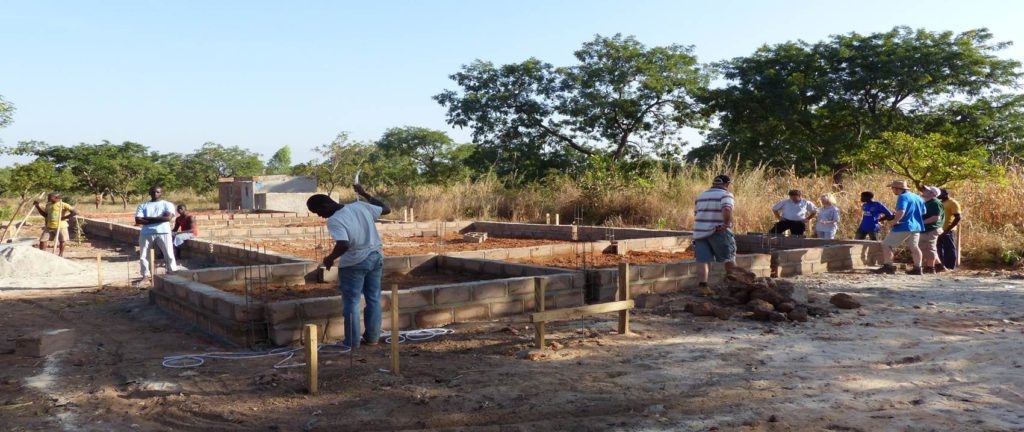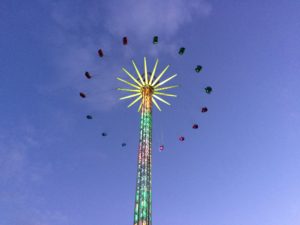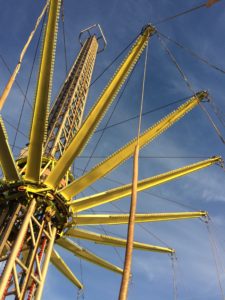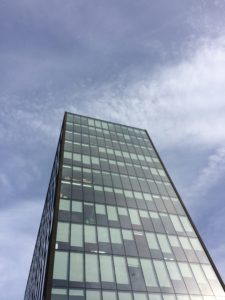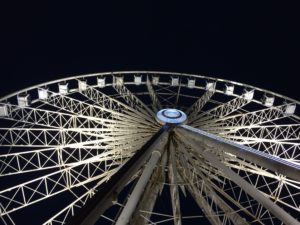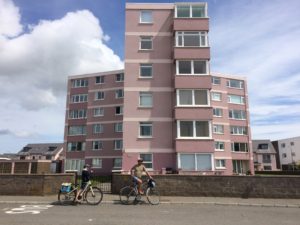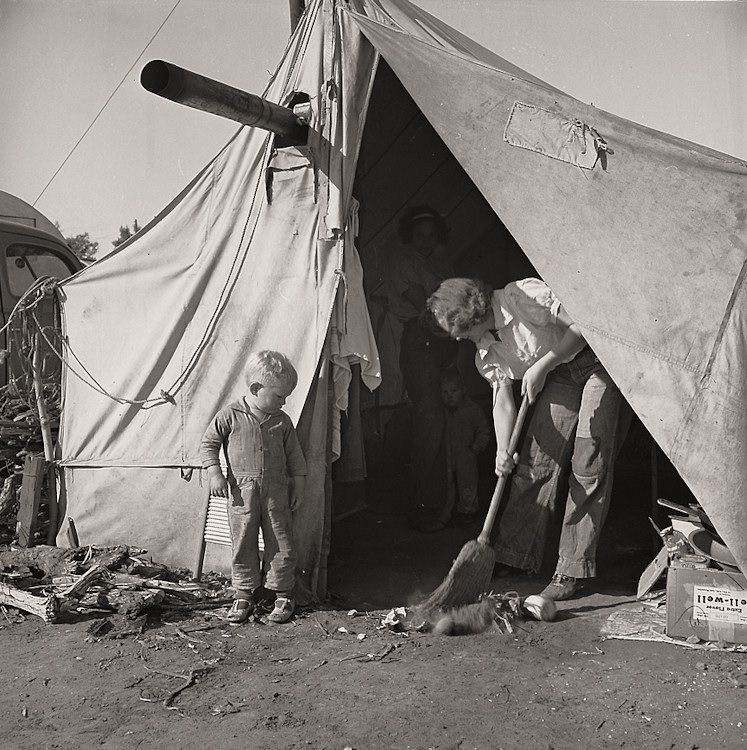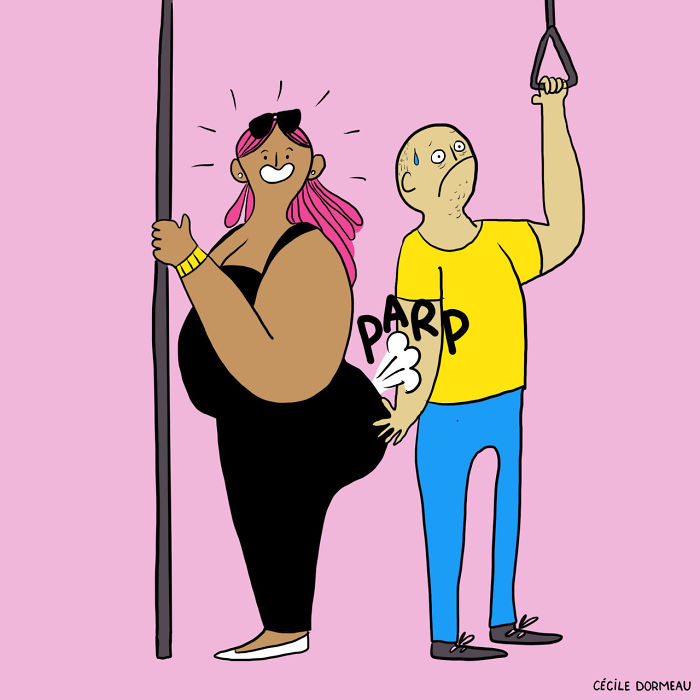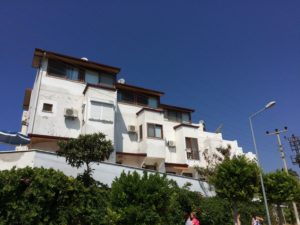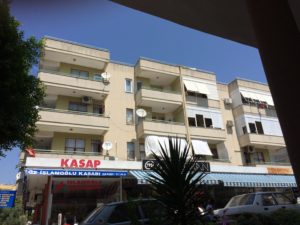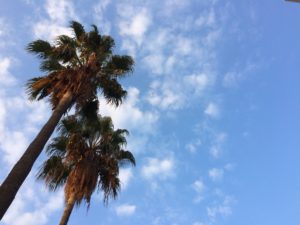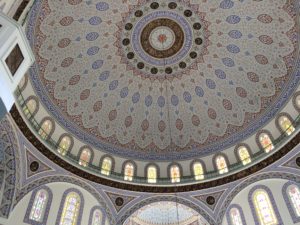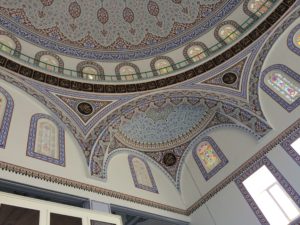Now I find myself looking at tableaux photography, I have chosen to study the pairing of these two artist by looking at each of their work individually and then comparing and contrasting their photographs by looking at their style and aims of their series of images. I have chosen to look at Alfonso Almendros and Maria Kapajeva because I feel like their is something very unique and perhaps quite sinister and unnerving abut each of their series of images which relate to theme of family, and in some way also underpinning the theme of environment also. After looking at Almendros’ series entitled ‘Family Reflections’, I found a quite strange connection I had with the series in that it made me feel a little uncomfortable looking though the photos but it also made me question the message behind each of them resulting in an enjoyable experience as interrogate back and fourth with myself what the series’ attempts to represent. I will expand n my thoughts on his work later on this post. As well, Kapajeva’s series ‘Family’ again possesses an effective sense of eeriness due to the lighting techniques used and the way she divides two halves of the each photo down the middle to provide seven different images for the series. The split down the middle of her photos which is a recurring theme in all of her images makes us feel as though we as the audience are looking at new different images in what is one frame but divided t sow two different stories – one of the subject in one half an the other of the subject in the other half. One attracts me to the works of both artists is the captivating way in which they have addressed the style of tableaux photography. As well, I love how Almendros’ series seems very, sometimes overly staged in this one environment which you can see throughout the works as it does not changed where the actions in several photographs seem very dramatised. On the other hand, there is Kapajeva’s catalogue of works which does not seem at all romanticised in the actions performed in each image, instead it seems very natural and, almost like documentary imagery.

Both artists take a tableaux approach, however, I believe there is a fine line, which is near enough blurred between what tableaux imagery and documentary imagery is the way they look. There is very extreme tableaux photography where there is several subjective and people within the frame accompanied by film-like locations and props; mise-en-scene is vital in tableaux image. However, in documentary, although much moire informal, with the aim to capture an unexpected, unplanned moment in time, the look can be very similar to tableaux photography. Much like in the image above, however, we as the audience are aware that the photographer has arranged this shot and for the man to stand, naked in the middle of a road. Furthermore, both styles do provoke thoughts from the viewers which ask what the meaning behind an image was because as the audience, we are very much unaware of the happenings ‘behind-the-scenes’ as such. The aim of both styles is to give an insight.
What I like about the two series I am about to look at is the evident theme in each image. This contributes to the very powerful images that speak for themselves. The types of photographs set up are very captivating and in each photographers works based around the them of family you can see the very careful thought process that went in to making each image and together, the images in both artists selection complement each other.
Alfonso Almendros
Alfonso Almendros is an emerging photographer from Spain who lives and works in Helsinki. In a published article on photography website, GUP, they talk to Almendros about his work, Family Reflections and the described his work in a short paragraph which encapsulates the series and what it is about. They said: “Family Reflections captures the parallel of the now and then, each image defining one basic concept – the roots, obsession with death, virility as a symbol of authority, glorification of maternity or the sacred character of some objects. A series about family, struggle and intimacy that creates a parallel reality – words dissolve and become slightly dark, incomplete, almost invisible. The photographs evoke nostalgia, solitude, melancholy among others.”
Particularly in Alemendros’ work, you can notice the style of his work due form the colours used. This would have been a conscious decision, as well as the location used. He takes each image in the same location – a room in a house and you cans see the same furniture as you progress through the different images which would have appeared beforehand. Throughout the series, there is a division of the main series achieved through other images which can be classified as anomalies, in that they don’t fit the theme as such due to the change of location and subject. This is an effect I really like and hope to use in my own study.
A Collection of Images from the Series





On his website, Almendros does not provide any explanation about the series and the meanings behind his series, Family Reflections, however, GUP interviewed the photographer on the release of his series which provides answers to why he produced the images and what they mean.
Looking at the grouping of the images he has produced, I can draw my own conclusions from them but it is likely to be very far from the actual meanings and concept for the construction of the work. However, I am aware that the theme is based around family, and, form the title, I can conclude that Almendros is perhaps looking back at his own family, which, at the time of him making the series, may not have existed and it is therefore an homage to the relationship he may have had with his family members.
Alemendros states that’ Family Reflections’ came at a point in his life where he was full indecision. He also says “after living abroad for a few years, I decided to go back to my hometown and spend a few months with my family. There, I found things that had changed during my absence.” This was what spurred his choice ot make a photographic series of works relating to the changes that occurred in his environment that he remembered in a different way before his absence. As well, he wanted to document the change in his family members attitudes and behaviours since coming back from being abroad.
Alfonso Almendros also states that his father was a photographer beofre he ws born, however he died when Almendros was two years old but he cameras and photographs remained in their house – influencing his need to pick up a camera and begin shooting.
Image Analysis

This, for me, is one of the most powerful images in the whole series because it is so unusual and quite difficult to decode because of its eeriness.
However, if I was to attempt to decode the image, I would suggest that the dead bird could be a metaphor for the relationship between Almendros and his mother and sister after coming back from travelling in that it is now non-existent and itself is dead because he feels as though he doesn’t have that previous, special relationship with his family members but his absence has resulted in them all becoming distant and therefore, when he arrived back in Spain, he came back to something that change dramatically to what he remembered and to him, he may have seen this as very upsetting that the previous memories stored in his mind did not exist when he cam back to his hometown. Now the relationships has to be rekindled and re-created in order for the family to become attached and ‘as one’ again. I believe this image is well representative of the series title as Almendros is looking back and reflecting on what had previously been part of his life – a paramount factor of his happiness when he had that special bond with his mother and sister which now, as he talks, is different as the environment around him and the people he loves has changed.
Talking about the environment, this is the first image of several in the series and it is a great image to have as the opening frame as it sets the mood and atmosphere for the images to come. This image is taken in a room which is a recurrence throughout he series as you notice ht dame wall beyond the subject in most of the images. It is, what looks like a barren and dark room which possess no emotion and it seems very melancholy, deriving the same feeling from audience – a feeling of emptiness and hardship in a way because of the theme throughout of loneliness and trauma, regret, nakedness. A whole array of emotions make up this series and contributes to the whole mood.
Looking at the technical factors in the image and how it is composed, the use of depth of field is used to full extent to make the image very visually pleasing. There is a very shallow depth of field where only the foreground is in focus and it is focused solely on the bird lying just over the edge of table just off the center of the frame. Everything else gradually become blurred, whether it be to the right of the bird where the bowl on the table is out of focus or behind the bird where as you look further into the image, the table cloth comes more and more blurred as well as the glass behind This effect leaves just the bird in focus and it has a great effect and forces our eyes t be drawn to the bird only.
The colour within the images are very similar an there is a very stimulating colour palette because although they are all very bland and dark, they all work very well together. There are different shades of brown that complement the off white of the table cloth and the yellow of the bowl as well as the brown bird. The colours all seem quite faded and it is create a vintage effect. This was perhaps the style of homes in Spain. There seem to be a source of light coming from the right also which illuminates the frame.
Maria Kapajeva
Maria Kapajeva is a Russian artist from Estonia based in London who left her career in Economics behind and moved to the UK to get her BA and then MA in Photography at University of Westminster. Her work has been exhibited internationally including Belfast, FORMAT and Guernsey photo festivals.
In her work Maria focuses on the issues of women representation in contemporary society and cultural and social stereotypes around that representation – shown through a very strong message in her series ‘Family’ In her practice she expands the borders of photography working also with found images, video and textile crafts.


For this piece above entitled ‘I Am Usual Women’, the used photographs on the quilt were found on the matrimonial websites specially created for Russian women to find a Western husband. The images for the quilt are carefully selected from the ones which were shown on these websites as ‘the best samples’ of how women should be photographed for the best matchmaking. She looks at the fantasies of Russian women and is one of several works she has produced which relate to the role of women in society and how the are perceived to be – that they are often objectified due to their gender and therefore sexualised but also seen as the leaders of the home-life in that they do the work to cater for the husband. 
About the series ‘Family’ taken form Kapajeva’s website:
“The series is an exploration of family as an integrated institution within its problems such as miscommunication or misunderstanding between its members. During her research she collected a lots of stories from people about how badly the misunderstanding could end up because of lack of an essential communication in the families on daily basis. Maria selected seven most common scenarios and interpreted them in her images. Each story consists of two separate photographs placed close to each other for an installation. The physical division between two prints visualise a distance between family members who are involved in each story. Even though Maria staged peculiar scenarios, she is open to other interpretations by the viewers. Thus, each pair left with no caption to give a space for people to find their reading of the set-ups.”
A Collection of Images from the Series




As well, it is evident that lighting is important feature of Kapajeva’s work, in particular, this series which focuses on divisions of family life and relationships between family members, as well as contrasting characters and how these clash and produce an “empty family” which has no cohesion or bond no more. She illuminates each subject in each half of every image to show the spotlight on them and this is also a popular technique in most tableaux images. It creates shadows and they high key lighting shone upon the subject’s face puts them in spotlight of the audience – under pressure as such.
Kapajeva’s work is very well produced as she has created a consistent series of images that all work together in harmony to create a documentation through tableaux photography that speaks to the women of Russia through the visualization she provides of family life in terms of how a wife and husband and their potential kids may behave in their home. Each image int the series is divided through the middle by cropping one side and then the other to create the effect as if you are looking at two different images but then on closer inspection, is one because the two sides often work together to show tow different environments with different subjects in, however, a hint that they are a whole image maybe given through the body positioning of the subjects or where they are looking. Although the environments in both halves often seem different, they produce a contrast of the characters in them and the audience are forced to see the two images combined to create a narrative. Her images often follow the theme of showing a husband and wife and their physical and mental divide and breakdown as they may begin to become two as opposed to the previous one harmonic couple the once were. This is also backed up by the physical divide of Kapajeva’s images.
Image Analysis

This is one of the images form the series and is one of my favourites due to he complete contrast ad powerful and evident message it is trying to get across.
Like I mentioned above, it sows the physical; divide between family life between a husband and wife and then often the child involved as well – in the frame – the child glued to her mother’s side – reiterating the desire for children to be attached to their mums at the early stages of their life as they feel safe mum due to the connection built with them form birth. It creates this sense of fragility and preciousness – that this child possesses and she is at the fore front of everything done in the house and the parents’ life revolves around her. But also the fragility of family
As well, the image is illuminated on both side with the use of high key lighting on both subjects and the activity they are doing. Te women of the house is in the typical potion of doing work and providing for the others in the house. In the frame, she is doing the ironing whilst looking at the man with an expression showing no emotion – it is as though she is fed up and sh is looming in envy as the husband sits in the armchair with his beer watching the TV – he is ot watching over his daughter and it is instead left up to the wide even though is currently busy. As well, the kid is in a position of anger underneath the iron the mother is using, yet the male is not paying attention and it gives the sense that there is no communication between the two and they are at their worst where they cant bare to look at each directly and instead live their life trapped inside themselves.


